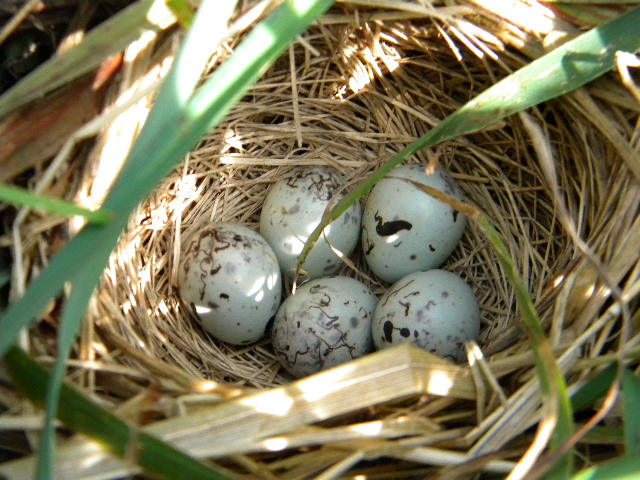 Photo ©
John Bigham, Jr.
Photo ©
John Bigham, Jr.
Lessons from the Field
Learning a new skill can be daunting, but it often helps to learn from the experiences of others. John Bigham, Jr. of New Paris, Ohio, recently shared with us some words of wisdom he’s picked up since joining the project in 2011. John monitored 24 nests this year, representing 13 different species–3 of them for the first time. He spoke with us about some lessons learned along the way in the spirit of sharing the benefits of his experience with others. We hope that it encourages newbies to get out in the field next year and collect more and better data than ever before.
- Avoid checking nests too close to the fledging date. Checking nests that are within 2-3 days of fledging puts nestlings at risk of leaving the nest prematurely. Always check from a distance using binoculars when chicks get close to fledging (i.e., they’re fully-feathered and alert). This is particularly true for open-cup nesters.
- Assess possible reasons for nest failure, and make any necessary adjustments. John reports that he definitely notices a difference in the successfulness of nests that he is able to meander around compared to those that must be checked on a dead-end path. If nests can only be approached using a dead-end trail, it might be best to observe only from a distance or not monitor that nest at all. He is also careful to watch for any nest predators (e.g., jays, crows, cats) that might be around to avoid leading them to nests.
- Just let go. Despite our best intentions, nests sometimes fail for reasons that are out of our control. Whether it’s because of drought, storms, or just bad nest positioning, John encourages others to just let go of what we can’t control and accept this as part of a nest monitor’s job.
- You can’t find what you’re not looking for. While John also monitors nest boxes, it’s the open cup nests which he prefers to watch. But how does one find the nests of birds like American Goldfinches, Red-winged Blackbirds, Brown Thrashers, and others? John’s advice is to target specific birds in the habitats that they prefer, and cue in on vegetation structures that might attract those species. For example, that low shrub in an open field might contain a goldfinch nest. That thorny rose bush near a pond is likely home to a Gray Catbird. By learning about habitat preferences, and knowing a bit about each species’ behavior, you can find many more open cup nests than you think!
Nest monitoring not only contributes to scientific research, but it enables participants to gain insight into the natural world around them. You’ll learn about the importance of habitat to nesting success, the struggles that birds must overcome in order to reproduce, and how different life history strategies employed by various species might have adapted. If you’re just joining the NestWatch team, know that we’re here to assist you on your journey of discovery. So are other NestWatchers, so ask questions, be proactive, and enjoy the learning process!
 Photo ©
Photo ©